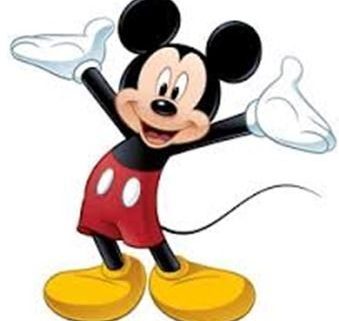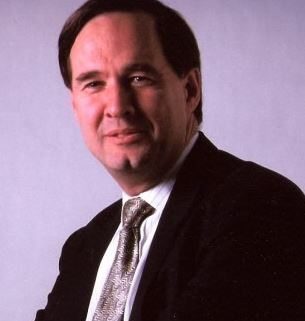As a potentially profitable opportunity presents itself, John will send you an alert with specific trade information as to what should be bought, when to buy it, and at what price. This is your chance to ?look over? John Thomas? shoulder as he gives you unparalleled insight on major world financial trends BEFORE they happen. Read more
While the Diary of a Mad Hedge Fund Trader focuses on investment over a one week to six-month time frame, Mad Day Trader, provided by Jim Parker, will exploit money-making opportunities over a brief ten minute to three day window. It is ideally suited for day traders, but can also be used by long-term investors to improve market timing for entry and exit points. Read more
Global Market Comments
July 10, 2014
Fiat Lux
Featured Trade:
(WHY IS THE S&P 500 BEATING THE DOW),
(SPY), (BAC), (HPQ), (AA), (GS), (V), (NKE), (AAPL),
(GE), ($NIKK), (CAT), (DIS), (INTC),
(AN EVENING WITH BILL GATES, SR.)
(TESTIMONIAL)
SPDR S&P 500 (SPY)
Bank of America Corporation (BAC)
Hewlett-Packard Company (HPQ)
Alcoa Inc. (AA)
The Goldman Sachs Group, Inc. (GS)
Visa Inc. (V)
Nike, Inc. (NKE)
Apple Inc. (AAPL)
General Electric Company (GE)
Tokyo Nikkei Average (EOD) INDX ($NIKK)
Caterpillar Inc. (CAT)
The Walt Disney Company (DIS)
Intel Corporation (INTC)
I often see one stock index outperform another, as different segments of the economy speed up, slow down, or go nowhere. Sometimes the reasons for this are fundamental, technical, or completely arbitrary.
Many analysts have been scratching their heads this year over why the S&P 500 has been moving from strength to strength for the past year, while the Dow Average has gone virtually nowhere. Since January, the (SPX) has tacked on a reasonable 7.9%, while the Dow has managed only a paltry 3.4% increase.
What gives?
The problem is particularly vexing for hedge fund managers, who have to choose carefully which index they use to hedge other positions. Do you use the broad based measure of 500 large caps or a much more narrow and stodgy 30?
What?s a poor risk analyst to do?
The Dow Jones Industrial Average was first calculated by founder Charles Dow in 1896, later of Dow Jones & Company, which also publishes the Wall Street Journal. When Dow died in 1902, the firm was taken over by Clarence Barron and stayed within family control for 105 years.
In 2007, on the eve of the financial crisis, it was sold to News Corporation for $5 billion. News Corp. is owned by my former boss, Rupert Murdoch, once an Australian, and now a naturalized US citizen. News then spun off its index business to the CME Corp., formerly the Chicago Mercantile Exchange, in 2010.
Much of the recent divergence can be traced to a reconstitution of the Dow Average on September 20, 2013, when it underwent some major plastic surgery.
It took three near-do-wells out, Bank of America (BAC), Hewlett Packard, (HPQ), and Alcoa (AA). In their place were added three more robust and virile companies, Goldman Sachs (GS), Visa (V), and Nike (NKE).
Call it a nose job, a neck lift, and a tummy tuck all combined into one (Not that I?ve been looking for myself!).
And therein lies the problem. Like many attempts at cosmetic surgery, the procedure rendered the subject uglier than it was before.
Since these changes, the new names have been boring and listless, while the old ones have gone off to the races. Hence, the differing performance.
This is not a new problem. Dow Jones has been terrible at making market calls over its century and a half existence. As a result, these rebalancings have probably subtracted several thousand points over the life of the Dow.
They are, in effect, selling lows and buying highs, much like individual retail investors do. It is almost by definition the perfect anti-performance index. When in doubt, always measure your own performance against the Dow.
Dow Jones takes companies out of its index for many reasons. Some companies go bankrupt, whereas others suffer precipitous declines in prices and trading volumes. (BAC) was removed because, at one point, its shares took a 95% hit from its highs and no longer accurately reflected a relevant weighting of its industry. Citigroup (C) suffered the same fate a few years ago.
Look at the Dow Average of 1900 and you wouldn?t recognize it today. In fact, there is only one firm that has stayed in the index since then, Thomas Edison?s General Electric (GE). Buying a Dow stock is almost a guarantee that it will eventually do poorly.
This is why most hedge funds rely on the (SPX) as a hedging vehicle and how its futures contracts, options and ETF?s, like the (SPY), get the lion?s share of the volume.
Mind you, the (SPX) has its own problems. Apple (AAPL) has far and away the largest weighting there and is also subject to regular rebalancings, wreaking its own havoc.
Because of this, an entire sub industry of hedge fund managers has sprung up over the decades to play this game. Their goal is to buy likely new additions to the index and sell short the outgoing ones.
Get your picks right and you are certain to make money. Every rebalancing generates massive buying and selling in single names by the country?s largest institutional investors, which in reality are just closet indexers, despite the hefty fees they charge you.
Given their gargantuan size these days, there is little else they can do. Rebalancings also give brokerage salesmen talking points on otherwise slow days and generate new and much needed market turnover.
What has made 2014 challenging for so many managers is that so much of the action in the Dow has been concentrated in just a handful of stocks.
Caterpillar (CAT), the happy subject of one of my recent Trade Alerts, accounts for 35.3% of the Index gain this year. Walt Disney (DIS) speaks for 24.2% and Intel (INTC) 23.4%.
Miss these three and you are probably trolling for a new job on Craig?s? List by now, if you?re not already driving a taxi for Uber.
It truly is a stock picker?s market; a market of stocks and not a stock market.
Believe it or not, there are people that are far worse at this game than Dow Jones. The best example I can think of are the folks over at Nihon Keizai Shimbun in Tokyo (or Japan Economic Daily for most of you), who manage the calculation of the 225 stocks in the Nikkei Average (once known as the Nikkei Dow).
In May, 2000, out of the blue, they announced a rebalancing of 50% of the constituent names in their index. Their goal was to make the index more like the American NASDAQ, the flavor of the day. So they dumped a lot of old, traditional industrial names and replaced them with technology highfliers.
Unfortunately, they did this literally weeks after the US Dotcom bubble busted. The move turbocharged the collapse of the Nikkei, probably causing it to fall an extra 8,000 points or more than it should have.
Without such a brilliant move as this, the Nikkei bear market would have bottomed at 15,000 instead of the 7,000 we eventually got. The additional loss of stock collateral and capital probably cost Japan an extra lost decade of economic growth.
So for those of you who bemoan the Dow rebalancings, you should really be giving thanks for small graces.
 Rebalancing? Yikes!
Rebalancing? Yikes!
 Miss This One, And You?re Toast
Miss This One, And You?re Toast
 It Truly is a Stock Picker?s Market
It Truly is a Stock Picker?s Market
 The Key to Your 2014 Performance
The Key to Your 2014 Performance
While the Diary of a Mad Hedge Fund Trader focuses on investment over a one week to six-month time frame, Mad Day Trader, provided by Jim Parker, will exploit money-making opportunities over a brief ten minute to three day window. It is ideally suited for day traders, but can also be used by long-term investors to improve market timing for entry and exit points.
While the Diary of a Mad Hedge Fund Trader focuses on investment over a one week to six-month time frame, Mad Day Trader, provided by Jim Parker, will exploit money-making opportunities over a brief ten minute to three day window. It is ideally suited for day traders, but can also be used by long-term investors to improve market timing for entry and exit points.
Global Market Comments
July 9, 2014
Fiat Lux
Featured Trade:
(LAST CHANCE TO ATTEND THE JULY 11 SARDINIA, ITALY STRATEGY LUNCHEON),
(DON?T BE SHORT CHINA HERE),
($SSEC), (FXI), (CYB), (CHL), (BIDU),
(CATCHING UP WITH ECONOMIST DAVID HALE),
(EEM), (GREK), (IWW), (EWJ), (NGE), (FXY), (YCS)
Shanghai Stock Exchange Index ($SSEC)
iShares China Large-Cap (FXI)
WisdomTree Chinese Yuan Strategy ETF (CYB)
China Mobile Limited (CHL)
Baidu, Inc. (BIDU)
iShares MSCI Emerging Markets (EEM)
Global X FTSE Greece 20 ETF (GREK)
iShares Russell 3000 Value (IWW)
iShares MSCI Japan (EWJ)
Global X Nigeria Index ETF (NGE)
CurrencyShares Japanese Yen Trust (FXY)
ProShares UltraShort Yen (YCS)
I have been relying on David Hale as my de facto global macro economist for decades and I never miss an opportunity to get his updated views. The challenge is in writing down David?s eye popping, out of consensus ideas fast enough, because he spits them out in such a rapid-fire succession.
Since David is an independent economic advisor to many of the world?s governments, largest banks and investment firms, I thought his views would be of riveting interest to you.
I met him this time at the posh Ozumo restaurant on San Francisco?s waterfront, near the Ferry Building. A favorite of Silicon Valley?s tech titans, I bumped into Marc Andreessen on the way in, nearly impaling myself on his pointed head.
I settled for a delicate vegetable tempura and eel sushi, while David, being from the Midwest, dug into an excellent Wagyu beefsteak. We washed it all down with liberal doses of Kirin beer and Takagi Shuzo designer sake.
David is an unmitigated bull on the economy, predicting that growth will leap from 2.0% in 2013 to 3% in 2014. Fading away of the fiscal drag created by a gridlocked congress will be the main reason.
Last year, we were hobbled by the maximum Federal income tax rising from 35% to 39.5% for income over $400,000. Capital gains rose from 15% to 20% as well. These combined to subtract 1% off US GDP growth in 2013. There are no such tax hikes planned for 2014.
The economy continues to power along, supported by three legs: housing, the energy boom and a reviving auto industry. Detroit is expected to pump out over 17 million vehicles this year, a figure only dreamed about six years ago, when it hit a rock bottom 9 million unit annual rate.
Management has a death grip on controlling costs, which is why they aren?t hiring, and explains the feeble employment statistics. This has enabled profit margins to surge to all time highs. Expect more of the same.
Europe should grow by 1% in 2014 after delivering a near zero rate this year. It will take years for them to return to any kind of normalized growth rate. That said, continental stock markets could well outperform those in the US in the near term.
David spends much of his time traveling, doing a major intercontinental trip almost every month. The coming calendar includes Japan, Australia, and Europe by yearend. To have his frequent flier points!
Two years ago, David was banging his drum about an imminent recovery in Japan (EWJ) and a collapse in the yen (FXY), (YCS). He was ignored by virtually all, except by me. As you may recall, I started laying on major short positions in the yen about then at David?s behest, which proved wildly successful.
The proof is in the constant testimonials that I regularly publish in my letter. I don?t make these up and they come in almost every day.
David believes that Prime Minister Shinzo Abe is doing all the right things, so the recovery is real, sustainable and will play out over several more years. However, he would have been wise to spread out the VAT tax rise that took place in April, from 5% to 8%, over five years instead of bunching it all up in one.
He also should spend less time focusing on domestic nationalistic issues, which have the undesirable effect in that it focuses China on Japan?s regrettable past, not its bright future.
He is also quite an authority on emerging markets (EEM), which account for 40% of global GDP, and sees the recent collapse as presenting a once in a generation buying opportunity.
His favorite is Mexico (EWW), which will benefit hugely from the first new round of political and economic reforms in 20 years. The new oil and gas fracking technology has also arrived just in the nick of time, as its existing conventional fields are approaching exhaustion.
David thinks Greece (GREK) has more to run, although not at the heady pace of the past year. Nigeria (NGE) is another outstanding opportunity, where he recently visited. A privatization wave there could boost GDP growth from 7% to 10%.
To show you how wide David casts his net, he had lunch with none other than Syria?s Bashar al-Assad a decade ago. The country was then enacting a series of ground-breaking liberalizations by privatizing banks, and was viewed as the hot frontier market of the day. How things change!
This is why investors expect outsized returns from these countries. Less, and the risk is not worth it. They?re called ?frontier? for a reason.
David has in the past made some far out predictions that were real zingers. Population growth is grinding to a halt throughout Asia. It is already well below the replacement rate in Japan and South Korea, which will soon be joined by China.
This will eventually lead to labor shortages in Asia, and bring to an end the cheap labor regime, which has driven their economies for the past 100 years. The Chinese work force will shrink from five times ours to only three times.
Their cost advantage then goes out the window. The upshot for us is that perhaps half of the 6 million jobs that America lost to China over the last 20 years will come back. Many items can now be bought cheaper in Chicago than they can in Shanghai.
This explains why ?onshoring? is accelerating with a turbocharger (click here for ?The American Onshoring Trend is Accelerating?).
China will still become far and away the world?s largest economy in our lifetimes. In 1700, Asia accounted for 58% of world GDP. Some 250 years of wars pulled that figure down to 15% by 1950. It is on track to recover to 50% by 2050.
To learn more about David Hale and the extensive list of services he offers; please visit the website of David Hale Global Economics at http://www.davidhaleweb.com.
Legal Disclaimer
There is a very high degree of risk involved in trading. Past results are not indicative of future returns. MadHedgeFundTrader.com and all individuals affiliated with this site assume no responsibilities for your trading and investment results. The indicators, strategies, columns, articles and all other features are for educational purposes only and should not be construed as investment advice. Information for futures trading observations are obtained from sources believed to be reliable, but we do not warrant its completeness or accuracy, or warrant any results from the use of the information. Your use of the trading observations is entirely at your own risk and it is your sole responsibility to evaluate the accuracy, completeness and usefulness of the information. You must assess the risk of any trade with your broker and make your own independent decisions regarding any securities mentioned herein. Affiliates of MadHedgeFundTrader.com may have a position or effect transactions in the securities described herein (or options thereon) and/or otherwise employ trading strategies that may be consistent or inconsistent with the provided strategies.


















